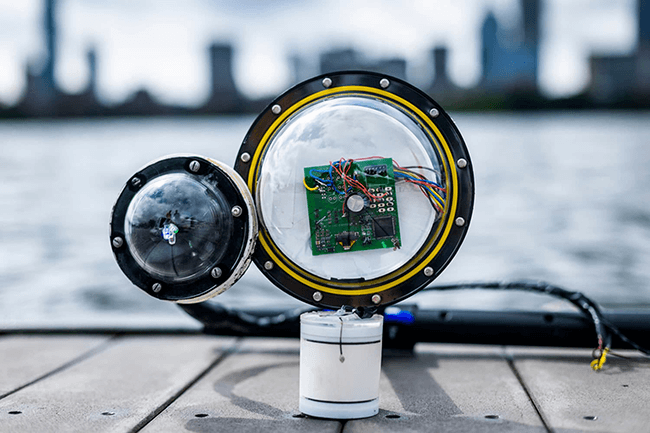MIT Researchers Develop Underwater Camera Using No Battery
Insights | 07-10-2022 | By Robin Mitchell
Recently, researchers from MIT have demonstrated an underwater camera capable of ultra-low power operation using no internal battery, but while it may seem impressive, is it actually a practical design? What challenges does underwater exploration present, what did the researchers demonstrate, and is it a practical device?
What challenges does underwater exploration present?
One fact about humanity that makes it somewhat exceptional is his desire to explore. Whether it is the darkest cave, the tallest mountain, or even the dark side of the moon, man continues to find ways to reach places that have been out of reach to his ancestors simply for the very act of discovery. Maybe there are resources of importance, or perhaps the answers to some of man's deepest questions lie in such places, but either way, exploration plays a critical part in humanity's identity.
However, there exists one place that man has barely been able to explore; the depths of the ocean. While space itself may be a hostile and unforgiving environment, the conditions found at the bottom of the ocean are significantly more challenging to cope with due to the intense pressure, the lack of light, and the inability to communicate with the surface. By contrast, radio waves can be sent from Earth all the way to the solar system's edge, while the vacuum of space is easily survivable with a tin can and a good seal.
To make matters worse, connecting an underwater probe to a surface ship with a cable to provide power and communication introduces numerous challenges in its own right. For example, the cable would have to be many kilometres long if exploring the deepest parts of the ocean (11KM), and this would be extraordinarily heavy. At the same time, such cable lengths can see signal delays as well as signal degradation. Finally, if the cable is severed, all control over the connected device is lost, which would be disastrous if carrying people.
MIT researchers create a battery-less underwater camera
Recognising the challenges underwater devices face, MIT has recently demonstrated a new device that can capture images while carrying no onboard battery. Furthermore, the device can communicate with surface ships without the need for cables of radio waves which presents numerous opportunities for extended operation deep underwater.
To achieve their goal, the MIT researchers first tackled the challenge of reducing the power consumed by the camera as much as possible. At the bottom of the ocean floor, there is no light, and this means that some kind of flash is needed. However, such flashes are highly inefficient as they release light across a whole spectrum. At the same time, the camera sensor used by the researchers is monochromatic, which saves energy but is incapable of detecting colour.
As such, the researchers created an RGB flash that flashes red, green, and then blue. The researchers combined three monochromatic images to produce a true colour image by taking three pictures with each colour flash. Their work results in a camera system that is 100,000 times more energy efficient than typical underwater cameras.
The next step in solving the numerous underwater challenges was to find an appropriate communication method. Water is excellent at absorbing electromagnetic waves meaning that radio and light communication were out of the question. However, water is an ideal medium for transmitting sound, and the researchers utilised this to their advantage. Simply put, a power transducer on the surface of the water emits sound waves that are picked up by the device, and the device can change its amount of absorption, which interferes with what the transducer detects when listening for reflections. This allows for a master/slave communication method whereby the transducer on the surface is the master, and the device underwater is the slave.
Finally, energy by the device is harvested using numerous connected piezoelectric elements that convert mechanical motion into energy. This energy is stored in capacitors which can then be used in bursts. At the same time, communication with a surface device also provides power, allowing the device to wake up, operate, transmit, and then sleep. The device was demonstrated at depths of up to 40 meters and capable of operating for several weeks, which shows a potential application in off-shore regions.

Is such a device practical?
With regards to underwater exploration, such a device is not practical for use in deep oceans due to the inability of sound waves to travel over 11km, be received, converted into practical energy, and then relayed a reflection. No amount of engineering will change that fact, and a sound wave able to go that distance and back would likely explode any living creature in its path.
However, it is more than practical for such devices to be installed in coastal areas and monitor underwater sea activity. For example, the devices developed by MIT could be used to monitor aquatic life on reefs and observe the changing climate's long-term effects or to monitor changes in underwater pollution to give researchers a better understanding of where and how pollution moves underwater.
Overall, the researchers have demonstrated an impressive device with numerous applications. It will never be used to explore the ocean's depths, but it definitely has applications in coastal regions.

